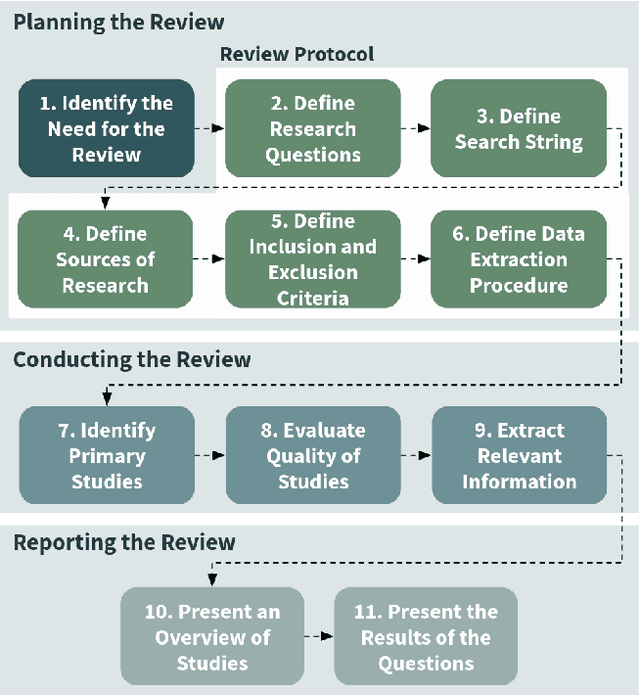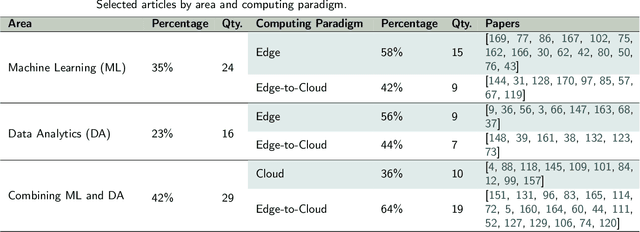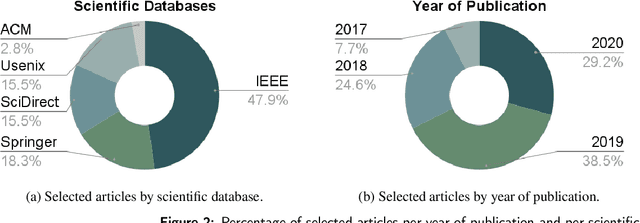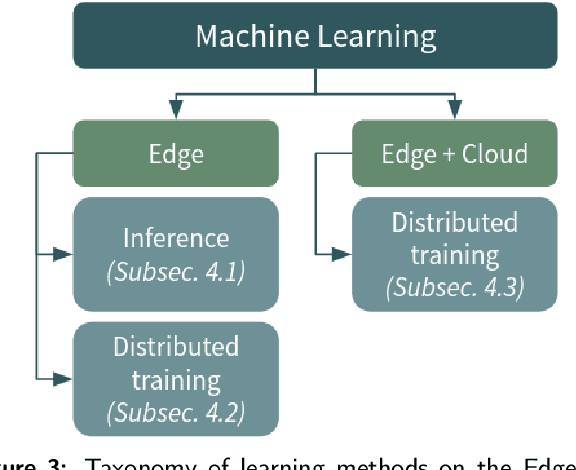Gabriel Antoniu
KerData
Distributed intelligence on the Edge-to-Cloud Continuum: A systematic literature review
Apr 29, 2022



Abstract:The explosion of data volumes generated by an increasing number of applications is strongly impacting the evolution of distributed digital infrastructures for data analytics and machine learning (ML). While data analytics used to be mainly performed on cloud infrastructures, the rapid development of IoT infrastructures and the requirements for low-latency, secure processing has motivated the development of edge analytics. Today, to balance various trade-offs, ML-based analytics tends to increasingly leverage an interconnected ecosystem that allows complex applications to be executed on hybrid infrastructures where IoT Edge devices are interconnected to Cloud/HPC systems in what is called the Computing Continuum, the Digital Continuum, or the Transcontinuum.Enabling learning-based analytics on such complex infrastructures is challenging. The large scale and optimized deployment of learning-based workflows across the Edge-to-Cloud Continuum requires extensive and reproducible experimental analysis of the application execution on representative testbeds. This is necessary to help understand the performance trade-offs that result from combining a variety of learning paradigms and supportive frameworks. A thorough experimental analysis requires the assessment of the impact of multiple factors, such as: model accuracy, training time, network overhead, energy consumption, processing latency, among others.This review aims at providing a comprehensive vision of the main state-of-the-art libraries and frameworks for machine learning and data analytics available today. It describes the main learning paradigms enabling learning-based analytics on the Edge-to-Cloud Continuum. The main simulation, emulation, deployment systems, and testbeds for experimental research on the Edge-to-Cloud Continuum available today are also surveyed. Furthermore, we analyze how the selected systems provide support for experiment reproducibility. We conclude our review with a detailed discussion of relevant open research challenges and of future directions in this domain such as: holistic understanding of performance; performance optimization of applications;efficient deployment of Artificial Intelligence (AI) workflows on highly heterogeneous infrastructures; and reproducible analysis of experiments on the Computing Continuum.
Reproducible Performance Optimization of Complex Applications on the Edge-to-Cloud Continuum
Aug 04, 2021



Abstract:In more and more application areas, we are witnessing the emergence of complex workflows that combine computing, analytics and learning. They often require a hybrid execution infrastructure with IoT devices interconnected to cloud/HPC systems (aka Computing Continuum). Such workflows are subject to complex constraints and requirements in terms of performance, resource usage, energy consumption and financial costs. This makes it challenging to optimize their configuration and deployment. We propose a methodology to support the optimization of real-life applications on the Edge-to-Cloud Continuum. We implement it as an extension of E2Clab, a previously proposed framework supporting the complete experimental cycle across the Edge-to-Cloud Continuum. Our approach relies on a rigorous analysis of possible configurations in a controlled testbed environment to understand their behaviour and related performance trade-offs. We illustrate our methodology by optimizing Pl@ntNet, a world-wide plant identification application. Our methodology can be generalized to other applications in the Edge-to-Cloud Continuum.
 Add to Chrome
Add to Chrome Add to Firefox
Add to Firefox Add to Edge
Add to Edge